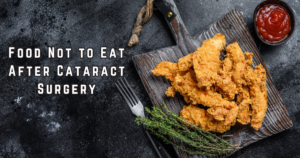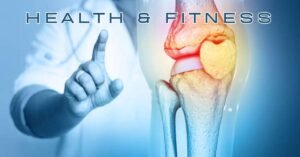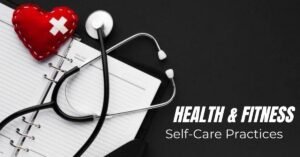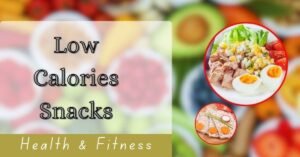Pick foods that are rich in nutrients for your diet. Nutrient-rich food (or nutrient-dense) is low in unhealthy fats, sugar, sodium, and carbohydrates. They are low in calories and high in vitamins and minerals. Micronutrients, such as vitamins and minerals, are necessary for your health. They keep you healthy and provide your body with nourishment. They can lower your chance of developing chronic illnesses. Your body can absorb them correctly if you get them through food.
Try to consume a variety of meals to obtain a range of vitamins and minerals. Fruits and vegetables are inherently nutrient-rich foods. Nutrient-dense foods include seafood, whole grains, dairy, legumes, nuts, and seeds.
ATH to better health
It is possible that you do not acquire all the micronutrients your body requires. Americans typically consume foods that are deficient in micronutrients and high in calories. Additionally, these foods frequently include trans or saturated fats, sodium (salt), and added sugar. Weight gain is a consequence of this kind of diet. It may raise your chance of developing conditions including heart disease and type 2 diabetes.
Grains Foods made from whole grains have less fat. They also include a lot of complex carbs and fiber. This keeps you from overeating and prolongs feelings of fullness. Look for the word “whole” in the ingredient list. Take “whole wheat flour” or “whole oat flour,” for instance. Choose goods with a minimum of 3 grams of fiber per serving. While some enhanced flours contain fiber, they lack nutrients.
Some Nutrient Rich Foods
Fruits and vegetables
Vegetables and fruits are naturally low in fat. They enrich your diet with flavor, minerals, and diversity. Seek out vibrant fruits and vegetables, particularly dark green and orange.

Choose these foods:
Brussels sprouts, cauliflower, and broccoli
Leafy greens, including bok choy, chard, cabbage, and romaine
Leafy, dark greens like kale and spinach
Pumpkin, sweet potatoes, turnips, squash, and carrots
Bell peppers, asparagus, green beans, and snap peas
Bananas, papayas, pineapples, mangos, apples, and plums
Grapes, pomegranates, cherries, blueberries, and strawberries
Oranges and grapefruits are examples of citrus fruits.
Melons, pears, and peaches
Avocados and tomatoes
Fish, poultry, beans, and meat
Lamb, veal, beef, and pork
Opt for lean, low-fat meats. Check their names for the terms “round,” “loin,” or “leg.” Before cooking, trim off any excess fat. Before eating, cut off any internal, separable fat. These meats are best prepared by roasting, baking, or broiling.
Reduce your intake of lamb, veal, beef. Compared to other protein sources, even lean cuts have higher fat and cholesterol levels.
Chicken
One of the better cuts of fowl is chicken breast. It contains a lot of protein and little fat. Before cooking, remove the skin and excess fat. Baking, broiling, grilling, and roasting are the healthiest methods for poultry.
Fish
Fresh shellfish and fish should be transparent and moist. Their flesh should be firm and springy, and they should smell clean. If fresh fish is not available, select canned fish that is low in salt or frozen. The finest sources of omega-3 fatty acids are oily fish obtained in the wild. This encompasses sardines, mackerel, tuna, and salmon. The healthiest methods for cooking fish are broiling, baking, steaming, and poaching.
Dairy Products and Alternatives
Select enhanced milk alternatives, skim milk, or low-fat milk. In coffee and recipes, try using evaporated skim milk instead of cream. Select cheeses that are low in fat or fat-free.
Choose these foods:
Skim, low-fat, nut, or fortified milk (such as rice or soy)
Replace cream cheese with skim ricotta cheese.
Cottage cheese with reduced fat content
Cheese strings
Substituting plain nonfat yogurt for sour cream
Considerations
Most nutrient-rich food is located in the grocery store’s outer circle. Your daily caloric requirements determine how many nutrient-rich foods you should consume. Nutrition information for children and adults is available on USDA’s ChooseMyPlate.gov website.
Can I boost my nutrient intake by using multivitamins or supplements?
Many of us are becoming more conscious of our diets and how our food might improve our health, as many nations encourage their citizens to remain at home. BBC Future is updating some of our collection’s most well-known nutrition articles to help separate reality from fantasy.
Our coworkers at BBC Good Food are concentrating on doable ways to substitute ingredients, healthy store-cupboard dishes, and every facet of cooking and eating while under lockdown.
Picture the perfect meal—one that has every nutrient required to fulfill our daily nutrient needs without going overboard. If such food were available, our bodies would have the ideal nutritional balance if we just ate it.
To prevent exceeding the daily suggested levels, eating a variety of foods that are abundant in nutrients but do not contain excessive amounts of any one nutrient when taken together is essential. That is particularly crucial when we are compelled to change our daily routines, as many people have experienced during the pandemic due to forced isolation.
Scientists examined over 1,000 foods and gave each one a nutritious score. When combined with other foods, foods with higher scores are more likely to satisfy but not surpass one’s daily nutritional needs.
Sardines are tiny, greasy fish that are safe to consume whole, including their bones, organs, and other nutrient-dense sections. They have a small amount of nearly every vitamin your body needs.
Some More Healthy Foods

Kale
A leafy green vegetable, kale is high in antioxidants, fiber, vitamins, minerals, and other bioactive substances. Additionally, brassicas like cabbage and kale contain chemicals that have been shown to combat cancer.
It supplies potassium, calcium, magnesium, copper, manganese, and the vitamins C, A, K, and B6. There are just nine calories in one cup.
Seaweed
Seaweed comes in a variety of forms and culinary applications. Sushi, for example, is wrapped with nori.
Seaweed contains minerals, including calcium, iron, magnesium, and manganese (Trusted Source).
Iodine, a mineral your body utilizes to produce thyroid hormones, is abundant in it.
A few investigations using test tubes and animals According to a reliable source, seaweed’s polysaccharides and other minerals may also possess antioxidant qualities. Accordingly, they might aid in preventing oxidative stress, which fuels inflammation and other illnesses.
Shellfish
Shellfish such as mussels, oysters, scallops, and clams can be very nutrient-rich foods. They contain important elements like zinc and vitamin B12.
Clams are an excellent, reliable Source of B vitamins, especially B12. They also supply iron, potassium, selenium, and vitamin C.
As with other fish, it is important to buy safe and sustainable shellfish because some seafood might contain poisons like mercury.
The potato
Potatoes are a reliable source of potassium, magnesium, iron, copper, and manganese. They also contain most of the B vitamins and vitamin C. Peels are a good source of fiber if eaten with fruit.
Research from 2021:
According to statistics from a reliable source, adolescents in the US who eat potatoes are more likely than those who do not to have higher amounts of essential nutrients like fiber, protein, B vitamins, and minerals. But there can be several causes for this.
Due to their resistant starch and high satiety, potatoes are a satisfying and substantial food. According to some research (Trusted Source), they might be more satisfying than other high-carb foods like rice or pasta.
Egg
Due to their high nutritional value, whole eggs are sometimes called “nature’s multivitamin.” The majority of the nutrients are found in the yolk.
Eggs are a filling food that offers healthy fats and high-quality protein (Trusted Source). You are less likely to feel hungry after eating because of their high satiety value. For this reason, eating eggs for breakfast could aid in weight loss.
Choline is one of the many potent compounds found in egg yolks, along with vitamins and minerals. They also include lutein and zeaxanthin, antioxidants that can shield your eyes. Trusted Source will lower your chance of developing eye conditions, including macular degeneration and cataracts.
Dark chocolate and cocoa
Cocoa powder contains iron, manganese, copper, magnesium, and antioxidants (Trusted Source). A cup of chocolate with milk and no extra sugar is a healthy treat.
According to specific research, consuming dark chocolate that contains 70–85% cocoa may lower the risk of heart disease, high blood pressure, and high cholesterol.
However, it seems unlikely that the nutrients you can obtain from eating a fair amount of chocolate will significantly impact your health.






